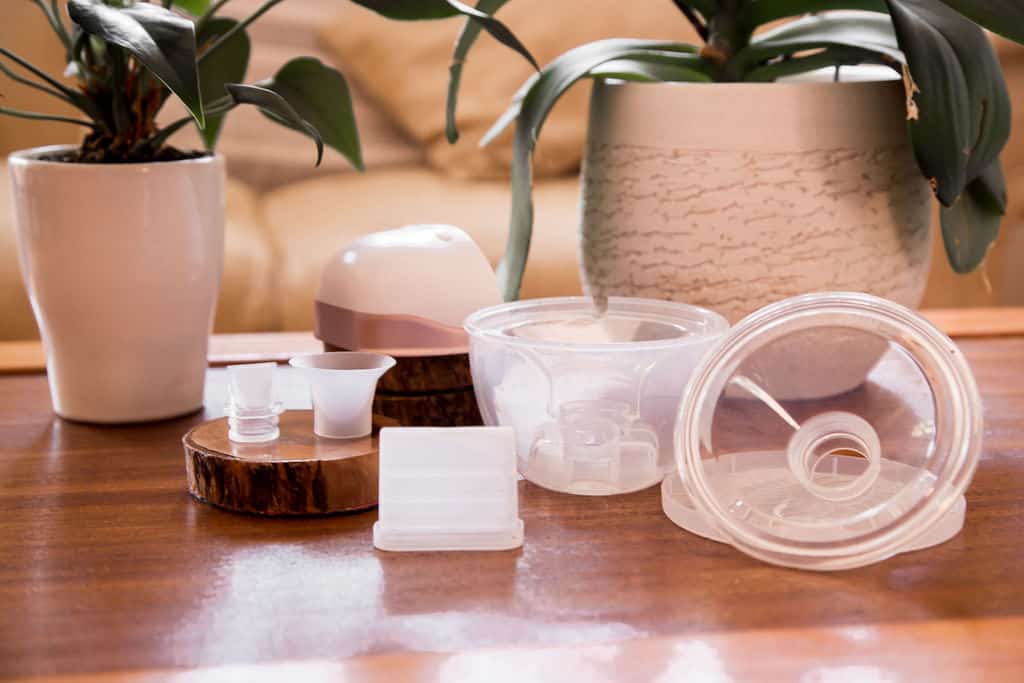
How Do I Know When To Replace My Breast Pump Parts?
Your breast pump becomes one of your breast friends (pun intended!). How could it not? You handle it with care, spend hours learning about it, it’s always there for you during those late-night pumping sessions. Let’s face it, you and your pump have a lot of work to do together. It’s no wonder that it needs proper tender love and care.
A good breast pump can enhance your breastfeeding journey. However, if frequently used, cleaned and sterilised, the pump parts are often stretched and worn out. They may even crack or form crevices that make it easier for residue, bacteria, and mould to build up in.
It’s important to take care of your best friend by replacing the parts as often as needed. In turn, new parts help keep your breastmilk cleaner!
This guide will answer the following questions:
- How often to Replace Pump Parts
- Duckbills
- Valve Membranes/Duckbills
- Backflow Protectors
- Breast Shields and Connectors
- Tubing
- What do I Do with my Old Breast Pump Parts
How often to replace pump parts
Over time, breast pump parts experience wear and tear. This can affect your pump’s suction, potentially causing a decrease in milk production. How often you should replace your breast pump parts varies based on how often you use your breast pump. Should a mom that pumps exclusively more than 6 times a day and sanitizes her pump more frequently than a mom that only pumps 3 to 4 times per day will need to replace her parts more often. In general, a good general guideline to follow is to replace parts every 90 days. However, the frequency with which you’ll need to replace your pump parts also depends on the piece.
Below are general timeframes for replacing each pump part.
Duckbills (duck valves)

Duck valves, also called duckbills, are made of silicone, and are one of the most important pieces of a breast pump. Duck valves stretch and release each time the pump motor pulls at the valve, creating the necessary suction to remove milk from your breasts.
How often to replace duck valves: Replace every month if you pump 3 or more times per day. If you pump less than 3 times per day, replace every 2-3 months. If your breast pump is starting to lose suction, replacing the valves is one of the first things that you should try. Also replace the duckbill if a small hole is visible between the two flaps. When there is a hole, your pump is not able to provide the best suction during your pumping session.
A good rule of thumb is to replace the duck valve if your pump has lost suction.
Note: Extend the life of your valves it is by not washing them in the dishwasher. Instead, wash duck valves in hot, soapy water with a clean brush.
Valve Membrane
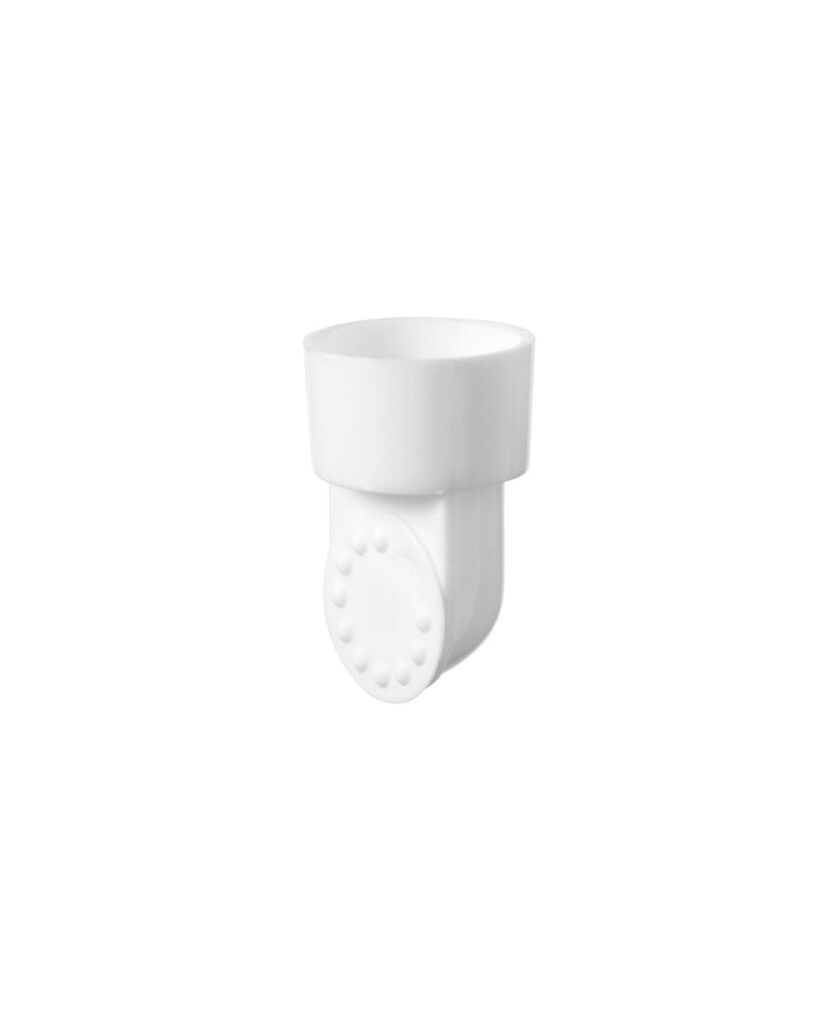
Valve Membranes serve the same purpose as duck values. (Some breast pumps come with duck valves while other pumps come with valve membranes.)
Valve membranes have two pieces – the coloured piece, which is the valve, and the white piece, which is the membrane.
How often to replace valve membranes: If you pump 3 or more times per day, replace valve membranes every 2-8 weeks. If you pump less than 3 times per day, replace every 2 months.
Backflow Protectors
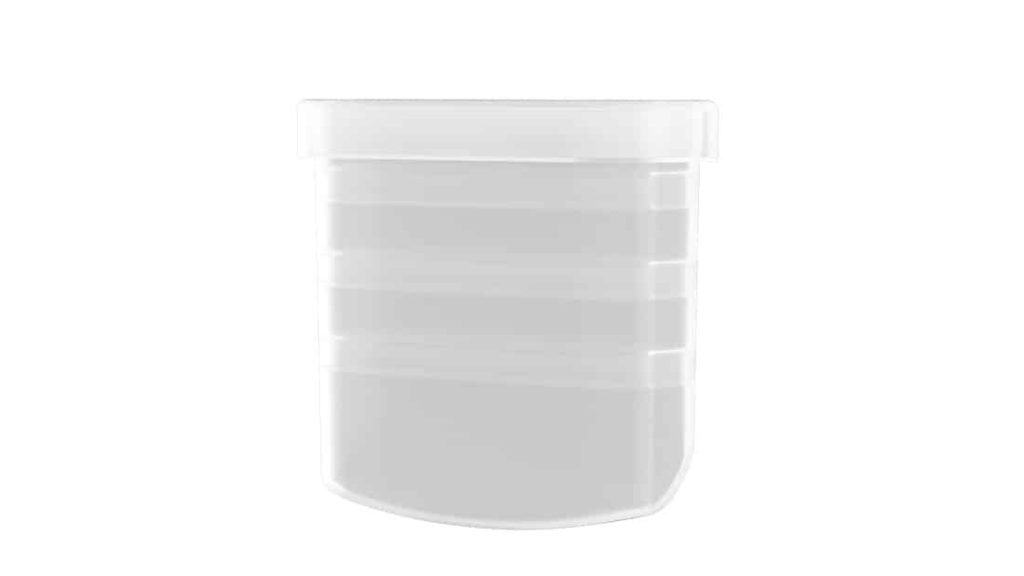
Backflow Protectors prevent breast milk and moisture from entering your tubing. Not all pumps have separate backflow protectors, however they are very important in wearable breast pumps. The white piece of backflow protectors are made from soft silicone and because of this they can stretch out over time as they are used.
How often to replace backflow protectors: Replace Backflow protectors every 3-6 months if you are pumping between 1 to 3 times per day. If you are pumping more frequently than 3 times per day, or if you are exclusively pumping, replace them every 2 months.
Backflow protectors can easily stretch out and reduce the amount of suction on your pump if not replaced.
Breast Shields and Connectors
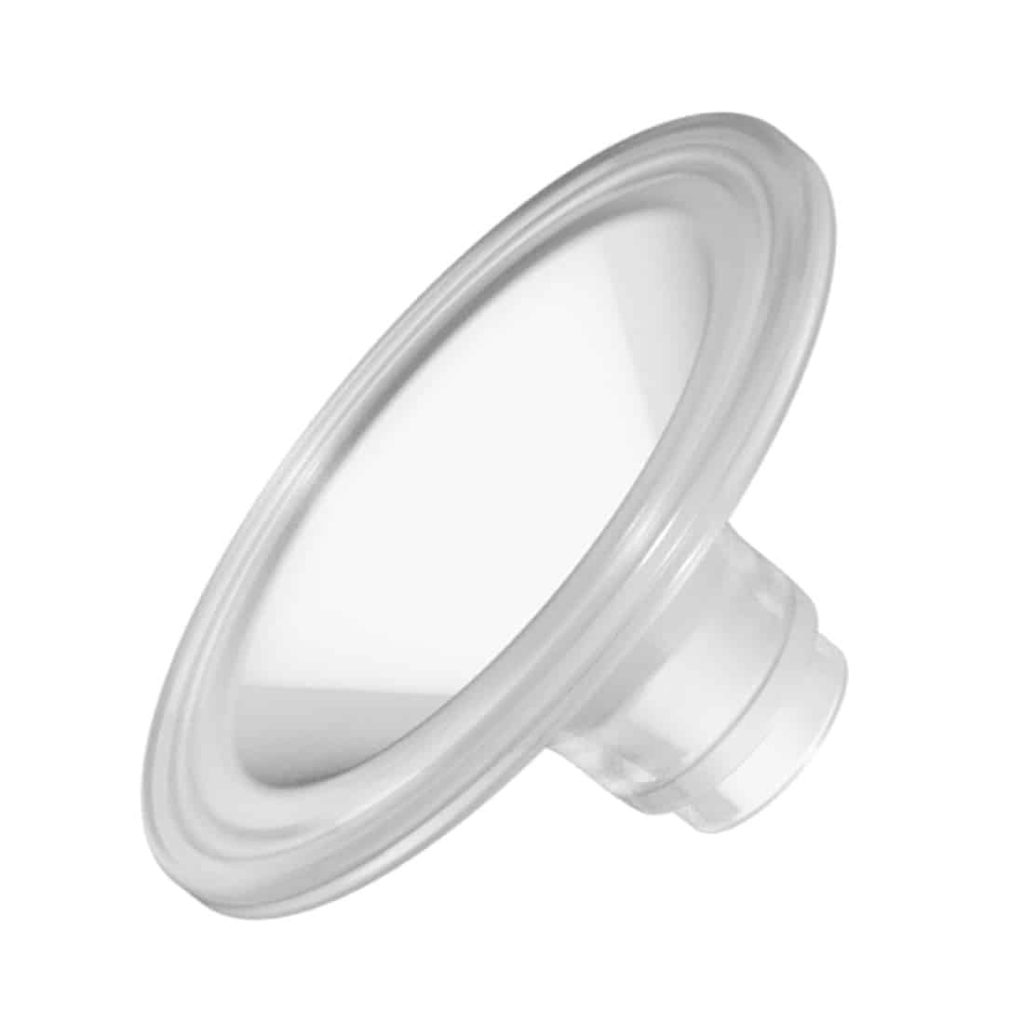
Breast Shields and connectors are the parts that attach to your breasts. Some pumps just have one piece that is both a breast shield and connector. Other pumps have separate pieces such as standard size breast shields with additional flange inserts that come in other sizes.
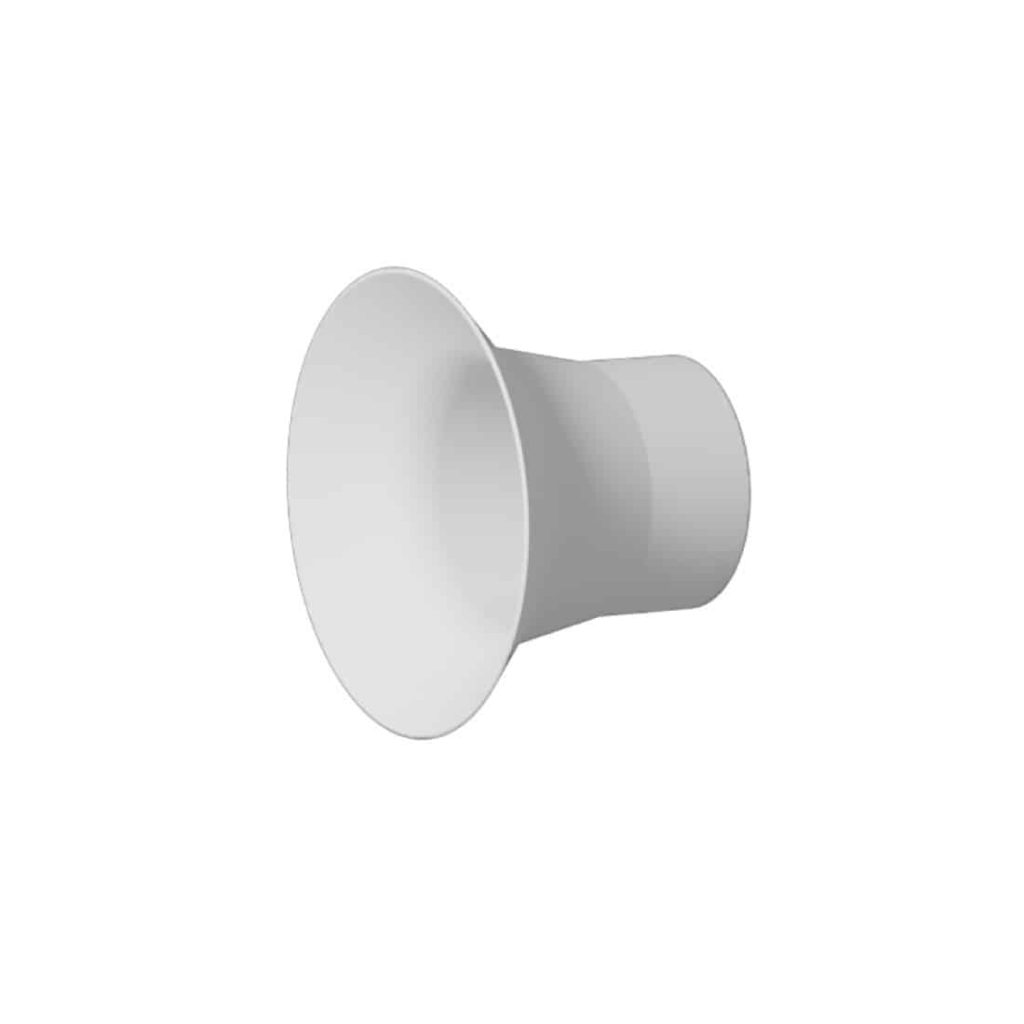
Connectors are the pieces that connect your breast shields to your valves, tubing, and backflow protectors.
These pieces can collect dried milk in small crevices. Even if you have a rigorous cleaning routine, it can be difficult to reach into every little crevice in these parts. As a result, residue can quickly build up on these pump parts, especially in hard-to-reach spots on connectors. This build up can negatively impact the effectiveness of the pump.
How often to replace breast shields: Every 6 months, or immediately if you notice tears or cracks.
How often to replace flange inserts: Replace flange inserts every 6 months.
Note: The flanges, breast shields, and connectors are all made from hard plastic. Because of the material, they should not stretch out with every use in the same way the white silicone pieces will stretch.
If you are rigorous about your cleaning routine, and you inspect the flanges frequently, then you may be able to extend the life of them. However, this means you should rinse milk off immediately after pumping, soak in hot water and sanitize every day.
Tubing
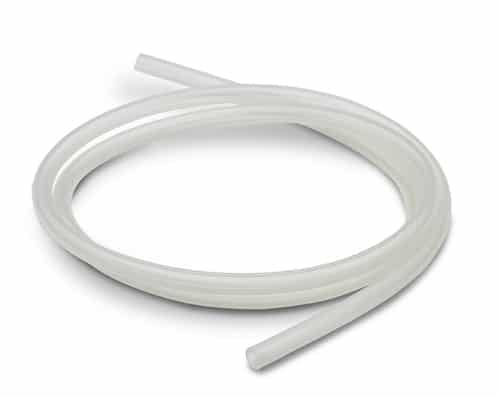
Tubing connects your pump motor to your pump parts and bottles. How tubing should be treated varies depending on the pump manufacturer. Some breast pump brands’ tubing requires immediate replacement if breast milk or moisture gets into the pump because it can damage the motor. Other brands’ tubing can be washed if this happens.
Breast milk or moisture gets caught easily in the tubing which can cause mould. As a result, the mould particles can transfer through the air and make a baby sick if they drink milk that was pumped with mouldy tubing. It should also be replaced if it looks dirty and you cannot clean it thoroughly.
How often to replace tubing: If tubing slides on and off easily when you’re not moving around, or when milk or moisture gets into the tubing of a closed system pump.
Good news: You will not experience any issues with tubing with newer versions of wearable breast pumps since it doesn’t require any tubing.
Below is a quick reference guide to when to replace pump parts:
So, how often should you replace pump parts?
| Pump Part | Replacement Frequency |
| Valves | 2 – 8 weeks |
| Membranes | 2 – 8 weeks |
| Duckbill Valves | 4 – 12 weeks |
| Backflow Protectors | 3 – 6 months |
| Tubing | 3 – 6 months (or as needed) |
| Flanges | Every 6 months (or as needed) |
| Connectors | Every 6 months (or as needed) |
| Milk Collection Bottles | When chipped, cracked, or leaking |
What do I Do with my Old Breast Pump Parts
Okay, so you replaced your breast pump parts…
Now what?
As a general rule, your breast pump cannot be recycled as it could pose a health risk to other moms. Also, the motors are only designed to last a year so a used breast pump could lose suction or come with other problems. However, a few of the supplies can be recycled.
- Tubing – Your tubing is not recyclable and can be thrown away.
- Valves – Dispose of your duck valves in the trash, since they are not recyclable.
- Backflow protectors – The exterior clear plastic parts can be placed in your recycling bin, but the white membrane is not recyclable.
- Flanges – Flanges (a.ka. breast shields) and connectors are recyclable.
If you experience a suction issue with your Milk It Wearable Breast Pump or notice that your pump’s parts are getting to the natural end of their operational life, Mommy Material can help you replace it with our spare part range. A great idea is also to keep an extra set of breast pump parts as a spare set. Then if something breaks there’s no need to panic.
Looking after of your breast pump will ensure a more positive experience in your breastfeeding journey and keep your milk supply steady.
We’d like to hear from you! What is your experience? Do you regularly replace breast pump parts? Do you notice a difference in suction and milk supply when you do?


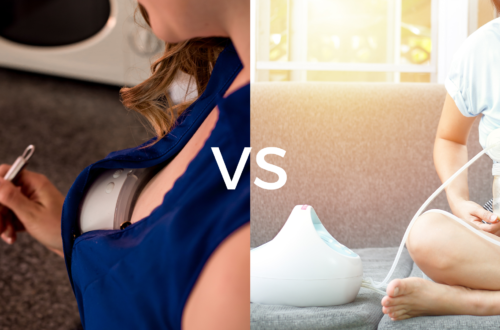

2 Comments
Sheron Tsebe
I need to order new parts, how do I do that?
admin
Hi Sheron,
Spare parts are available on our website to order here: https://mommymaterial.co.za/product/milk-it-breast-pump-spare-parts/